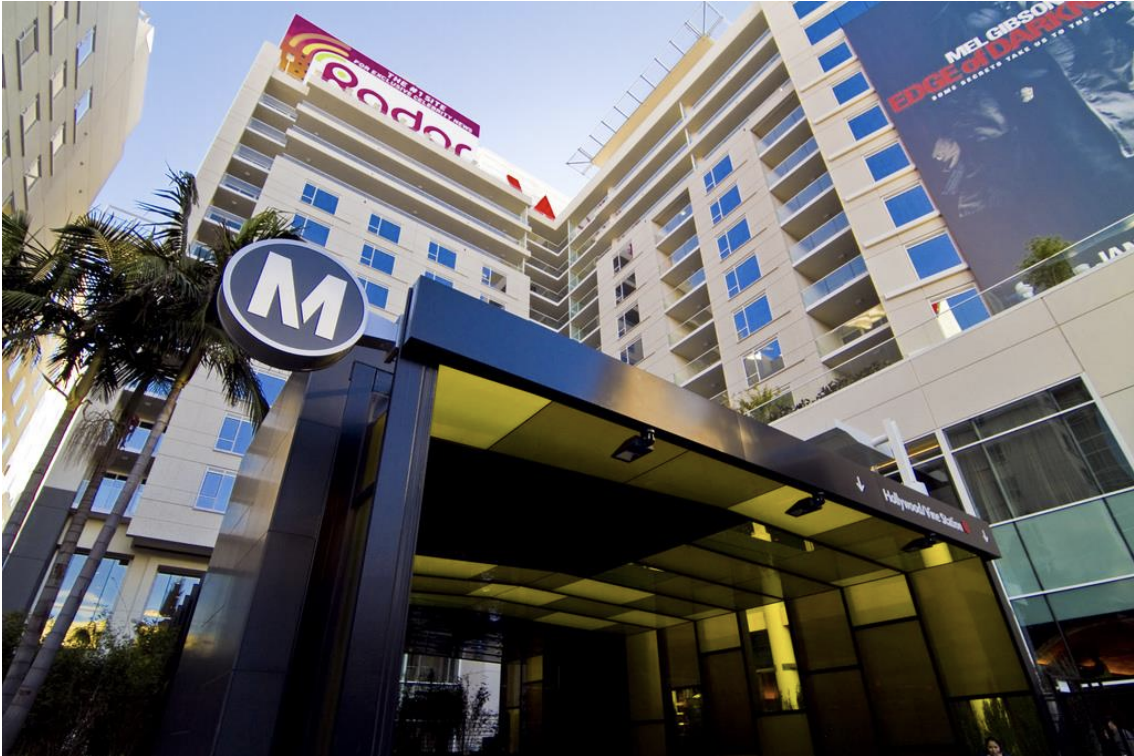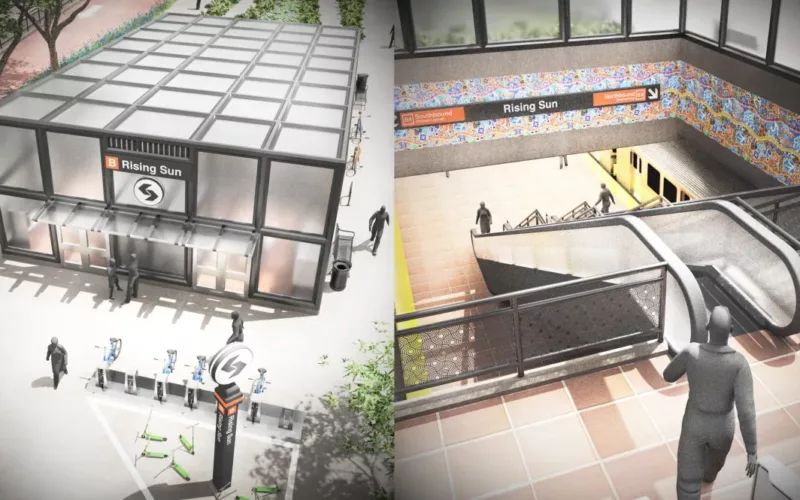
This piece was written by Natalee Rivera, TransitCenter’s Graduate Program Fellow.
The housing affordability crisis in the U.S. has displaced transit riders to areas with worse transit service and higher transportation costs. Recognizing that transit agencies can help reverse this trend, Sound Transit in Seattle and LA Metro in Los Angeles began incorporating anti-displacement and affordable housing policies into their large capital projects in 2016. Despite the financial uncertainties and upheaval wrought by the COVID-19 pandemic, both agencies continue to move ahead with these commitments, and are on track to make thousands of homes priced below the market rate available over the next several years.
The need for affordable housing is especially acute in both Seattle and Los Angeles. Even before the pandemic began, California already faced a shortage of more than a million homes for low-income families and had the nation’s third-highest rate of cost-burdened renter households, where at least 30% of income goes to housing costs. Being priced out is a top concern for LA residents, says Olivia Segura, who oversees transit-oriented development at LA Metro.
In Seattle, over two-thirds of low-income households were cost-burdened in 2018, and the median cost of rent and basic utilities was roughly 35% higher than in 2011-2015. Now the city is bracing for a “looming tsunami of evictions” once pandemic-related eviction moratoriums are lifted. Both the city and state legislatures are taking steps to tackle the housing shortage, and “the discussion of displacement is more important than ever,” notes Edward Butterfield, Senior TOD Project Manager at Sound Transit.
Both Sound Transit and LA Metro are able to keep housing development moving because it makes financial sense for them to do so – their affordable housing projects have continued to generate revenue throughout the pandemic.
Sound Transit and LA Metro are dramatically expanding their rail networks, which entails purchasing large swaths of land. During and after construction of rail projects, they are able to ground lease excess parcels of this land to developers for the express purpose of constructing affordable housing. Housing bonds issued by state and local governments — and sometimes the federal government — provide the upfront financing for below-market-rate housing development. Bonds issued before the onset of the pandemic will continue to sustain new affordable housing developments on transit agency-owned land for the next few years.
After Seattle voters approved a $53.8 billion plan in 2016 to expand the region’s public transit system, Sound Transit adopted what’s known as the “80-80-80” policy to minimize displacement of people and businesses from properties affected by the expansion. This policy requires 80% of the agency’s surplus land be reserved for affordable housing developers, who must reserve 80% of units for people earning 80% or less than the area median income.
The agency is in the midst of constructing 40 miles of light rail track and 28 stations, and is currently implementing 12 TOD projects on surplus property. Under the 80-80-80 rule, 337 affordable housing units have already been built, and 963 are in the planning phase. The agency’s TOD team is catching up on a backlog of properties in the pipeline to ensure the 80-80-80 policy is implemented effectively and properly. Administering this inventory of planned developments, as well as affordable housing projects currently under construction, has not been significantly interrupted by the pandemic.
Sound Transit recently closed on its largest affordable housing project to date, enabling construction to begin on a high-rise with 360 below-market units and more than 4,000 square feet of ground floor retail space near the Capitol Hill rail station, local bus lines, and the First Hill streetcar. And while progress on two agency-owned properties by the Angle Lake rail station, which opened in 2016, was initially delayed in March due to COVID-19, the Sound Transit Board officially approved offerings for both of these sites for affordable housing and mixed-use development. RFPs will be released in coming months to finalize development plans for the two sites.
As Sound Transit continues to manage and implement its 80-80-80 policy to help spur affordable housing development, the housing crisis and the disproportionate impacts of the pandemic on Black and brown communities loom large for the agency. The imperatives to mitigate disparate impacts on communities of color and alleviate housing pressures are “converging together to elevate affordable housing as a priority for the region,” says Butterfield.
The public transit system in Los Angeles is also expanding at a rapid pace with revenue raised from Measure M, which voters approved in 2016. LA Metro is working with developers to build projects on agency-owned properties through its Joint Development Program, in conjunction with the city of Los Angeles’s Transit Oriented Communities program. LA Metro’s affordable housing policy stipulates that 35% of housing units built on these Metro-owned properties must be affordable to households with no more than 60% of area median income.
Housing construction is expensive, and developers aren’t always inclined to take on affordable housing because profit opportunities are limited. But one way LA Metro is able to attract developers is by providing below-market rates to lease and build on their land.
So far, LA Metro has facilitated 2,000 units of housing, 31% of which are below-market. Its pipeline of joint development projects includes 396 additional affordable housing units. This work has continued through the pandemic.
In August, the LA Metro Board authorized a purchase and sale agreement for the property adjacent to the Vermont/Santa Monica Red Line rail station with an affiliate of the Little Tokyo Community Development Corporation. The developer will lease the 33,682 square-foot property to construct and operate a mixed-use, affordable housing project, with 185 homes for low-income households — roughly half of which will be reserved for individuals and families with very low incomes (no more than 30 percent of area median income).
According to Segura, the COVID crisis and the growing awareness of structural inequities facing people of color have generated a greater urgency for public agencies, including LA Metro, to enhance housing affordability and prevent displacement through public projects and initiatives. She says Metro is beginning to receive requests from the City of Los Angeles and the LA Metro Board of Directors to increase its commitment to affordable housing by, for instance, discounting agency-owned land at even greater rates, even as the city and agency grapple with broader financial challenges.
The agency “still has to cut budgets and be more conscious of resources,” Segura says, “but it hasn’t stopped any [affordable housing] projects per se…The political support is there.”
 On the Brink: Will WMATA’s Progress Be Erased by 2024?
On the Brink: Will WMATA’s Progress Be Erased by 2024?
The experience of being a WMATA rider has substantially improved over the last 18 months, thanks to changes the agency has made like adding off-peak service and simplifying fares. Things are about to get even better with the launch of all-door boarding later this fall, overnight bus service on some lines starting in December, and an ambitious plan to redesign the Metrobus network. But all of this could go away by July 1, 2024.
Read More To Achieve Justice and Climate Outcomes, Fund These Transit Capital Projects
To Achieve Justice and Climate Outcomes, Fund These Transit Capital Projects
Transit advocates, organizers, and riders are calling on local and state agencies along with the USDOT to advance projects designed to improve the mobility of Black and Brown individuals at a time when there is unprecedented funding and an equitable framework to transform transportation infrastructure, support the climate, and right historic injustices.
Read More